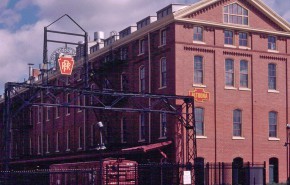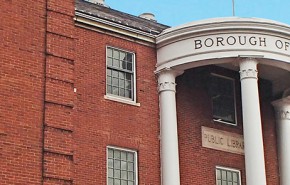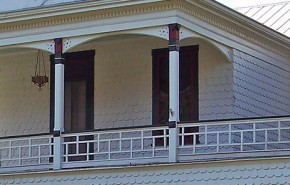Walking the Line into the Past
In 1748, Peter Kalm published a map depicting oil springs across Oil Creek, Pennsylvania, foreshadowing what would become decades of oil and natural gas opportunity, evolution, and history across the United States.
Continuing in the year-long celebration of Preservation50’s “Our Legacy, Our Future,” which commemorates the landmark legislation known as the National Historic Preservation Act (NHPA) of 1966, GAI is excited to showcase Part II of our historic preservation series: The Oil Region Alliance’s Natural Gas Traveling Exhibit.
Walking the Line—Then and Now
With the revolutionary oil boom hitting western Pennsylvania came the discovery of natural gas. As the many uses of natural gas became increasingly apparent, the United States soon embarked on the construction of a nationwide pipeline infrastructure.
Beginning in the early twentieth century, natural gas companies hired men to maintain the safety and efficiency of these pipelines. Known as “line walkers,” these men were responsible for checking pipeline pressure and closely inspecting pipes for leaks. Often faced with dangerous conditions ranging from icy streams to encounters with wild animals, line walkers braved the elements and logged thousands of miles each year “walking the line.”
Today, line walkers still play a crucial role in maintaining our nation’s pipeline infrastructure. Although modern technology has eliminated the need for daily pipeline walks, periodic inspections are still necessary every three to five years.
The First of Its Kind—ORA’s Traveling Exhibit
Located in Oil City, Pennsylvania, the Oil Region Alliance of Business, Industry and Tourism (ORA) is a nonprofit organization with a powerful mission to preserve the vibrant culture and traditions of Pennsylvania’s Oil Region. Through historical preservation and promotion, ORA is able to educate the public on the history of the region and expand upon the overall development and population of the area.
![]() GAI’s Cultural Resources Group is honored to participate in the first Natural Gas Traveling Exhibit on behalf of ORA. This interactive, museum-quality natural gas history exhibit allows visitors to test the tools that historic line walkers used since the mid-1800s, see the clothing they wore, and learn about the types of conditions in which they worked. This exhibit, funded by the Pennsylvania Heritage Parks Association, the Pennsylvania Department of Conservation and Natural Resources, and the National Park Service, is geared toward individuals of all ages.
GAI’s Cultural Resources Group is honored to participate in the first Natural Gas Traveling Exhibit on behalf of ORA. This interactive, museum-quality natural gas history exhibit allows visitors to test the tools that historic line walkers used since the mid-1800s, see the clothing they wore, and learn about the types of conditions in which they worked. This exhibit, funded by the Pennsylvania Heritage Parks Association, the Pennsylvania Department of Conservation and Natural Resources, and the National Park Service, is geared toward individuals of all ages.
In addition to an interactive exhibit, this project has also given Amanda K. Stander, AICP, Architectural Historian, the opportunity to work hands-on with students in local school districts to finalize a looping PowerPoint presentation for the exhibit and develop high school lesson plans that incorporate several academic disciplines, including mathematics, language arts, science, and social studies. These educational components will now be used to teach children all over the United States the importance of the natural gas industry.
Bridging the Gap—Sharing Natural Gas History
By facilitating a better understanding of natural gas history, this rare and exciting opportunity will allow GAI to help bridge the gap between the gas industry and academia, educators, government agencies, and the general public. The goal of this exhibit is to advance the understanding and interest in the history and evolution of the natural gas industry and interpret not only its past and overall relationship with the region, but how it connects to the future of the industry and its people. Starting in Oil City, The Valley that Changed the World, the Natural Gas Traveling Exhibit will soon be available for loan to a variety of venues throughout the United States.
![]() For questions or additional information about The Oil Region Alliance’s Natural Gas Traveling Exhibit, contact contact Ben Resnick, MA, RPA at 412.476.2000.
For questions or additional information about The Oil Region Alliance’s Natural Gas Traveling Exhibit, contact contact Ben Resnick, MA, RPA at 412.476.2000.
Visit Preservation50.org to learn more about the NHPA, which established the legal framework and incentives to identify and preserve our nation’s cultural and historic heritage. And stay tuned for the next installment in our Preservation50 Series!


